New Delhi: Raising her small index finger toward the majestic dome of Delhi’s Jama Masjid, 10-year-old Anabiya began describing the grand mosque’s imposing red sandstone structure and impressive dimensions to a group of curious tourists from Portugal. Her clear, confident English quickly drew a crowd. Introducing herself simply as ‘Tour Guide Ana’, she captivated not just the visitors, but passers-by too.
People stopped in their tracks, phones held high—not to film the monument, but to capture her. Even the tourists, initially focused on the architecture, turned their cameras on Ana, fascinated by how she turned centuries of history into a living, breathing story.
“I want to be the best and most well-known female tour guide in India,” said Anabiya, who becomes Ana the moment she steps out of the narrow lanes of her home and puts on her beach hat—sometimes pink, other days a beige one.
In the historic heart of Purani Dilli, where every street, monument and corner whispers tales of the past, a new generation is stepping up as the city’s storytellers. Delhi has always attracted curious travellers from around the world, but that interest is now fuelling a boom in heritage tourism. As the demand grows, the role of the tour guide is evolving.
Today, if you want to explore Old Delhi’s lanes and rich history, you can connect with 10-year-old Anabiya, 16-year-old Kajal, 17-year-old Chandni, or 21-year-old Heena. These young guides approach foreign tourists at popular spots like Jama Masjid, Lal Qila, Chandni Chowk and Daryaganj, offering informal, often unforgettable, tours.
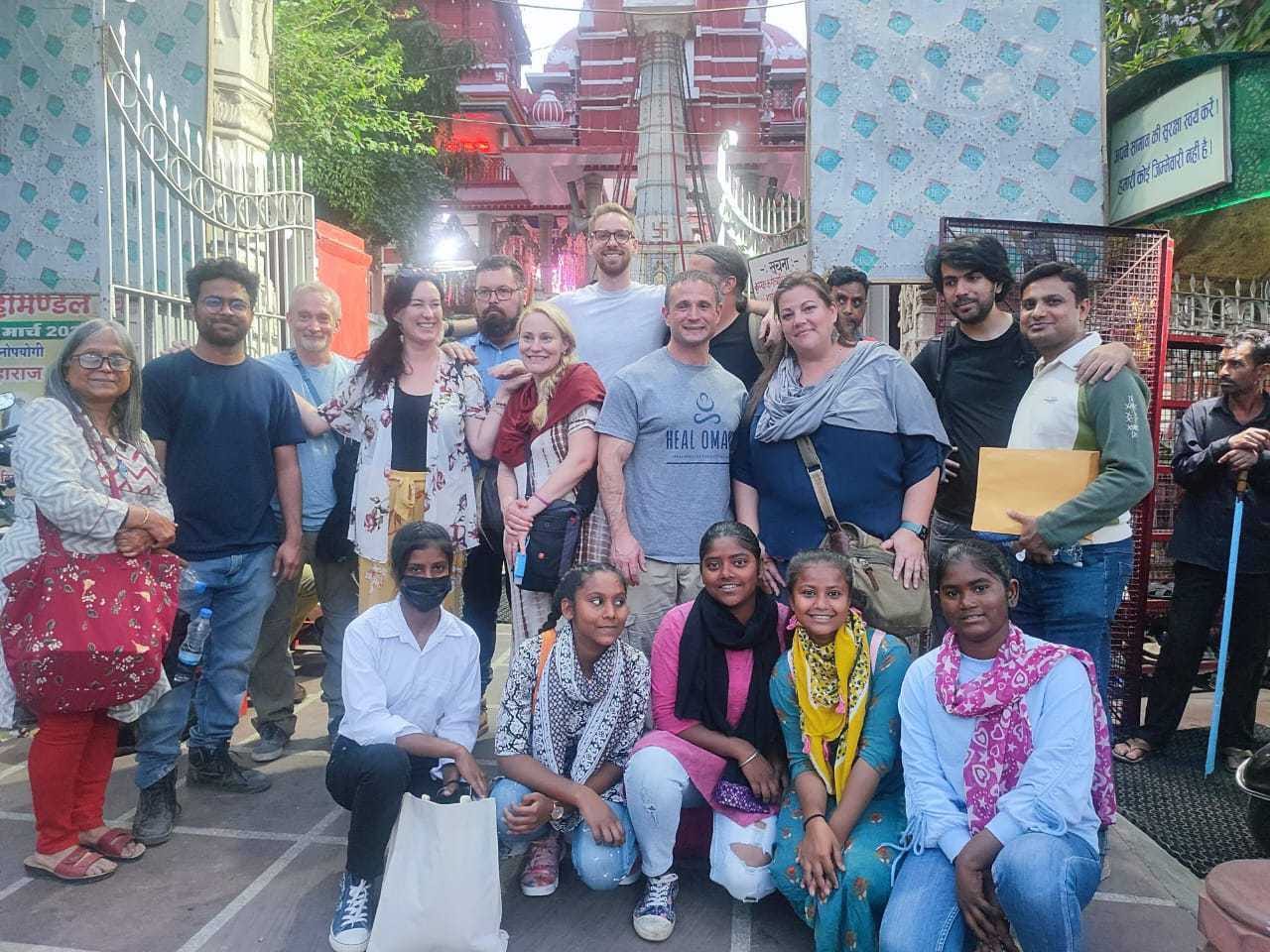
Supporting them are organisations like Salaam Baalak Trust and Purani Dilli Walon Ki Baatein, which train underprivileged youth to lead heritage walks, food tours, and even explorations of Old Delhi’s nightlife. With fresh voices and local insight, they are changing the way Delhi tells its story.
“Just as the way of telling Delhi’s history and the concept of heritage walks is evolving, so are the storytellers,” said Mayurima Kakati, a consultant psychologist who trains former street kids for food and city walks.
Ana’s tour moved ahead—not just through timelines, but through tucked-away pockets of the old city. She told tourists how the Jama Masjid was commissioned by Shah Jahan in 1650, stands nearly 40 meters tall, and spans around 9,000 square meters. But unlike other guides, she also took them to places often left out of heritage walks.
Her first detour was a walk through Urdu Bazaar, once known only for its bookshops, selling literature from all over the world. Her next stop was Meena Bazaar, where she pointed out the best roadside tea stall and took them around the electronics shops.
Then, Ana led the group into the heart of Bazaar Matia Mahal, where she enthusiastically talked about the smokey kebabs from Noori Masale, the variety of chicken at Aslam Chicken, and the mouth-watering biryani from Al Yamini.
“This gali is the jaan of Purani Delhi—it has food, clothes, shoes, accessories, everything,” Ana told a group of boys from Germany, pausing near an attar (perfume) shop. “Do you want to try some?” she asked with a grin.
Ana’s tours are not just about grand monuments. She weaves in the rhythms of everyday life—markets, scents, flavours, and fleeting moments that most visitors might miss.
“Besides the monuments, I’ve chosen my own favourite spots where I take my guests,” she said, leading the group toward a nearby DDA park.
It wasn’t crowded, but wasn’t empty either. At its centre lay a patch of wet mud. Soon, a few boys appeared—wearing only boxers. Two of them stepped into the mud and began a kushti (traditional wrestling) match, as the crowd erupted in cheers.
“No other tour guide will show you this,” Ana said with a smile, cheering loudly with the crowd. “But I always bring my tourists here after Red Fort or Jama Masjid. They absolutely love watching kushti with me.”
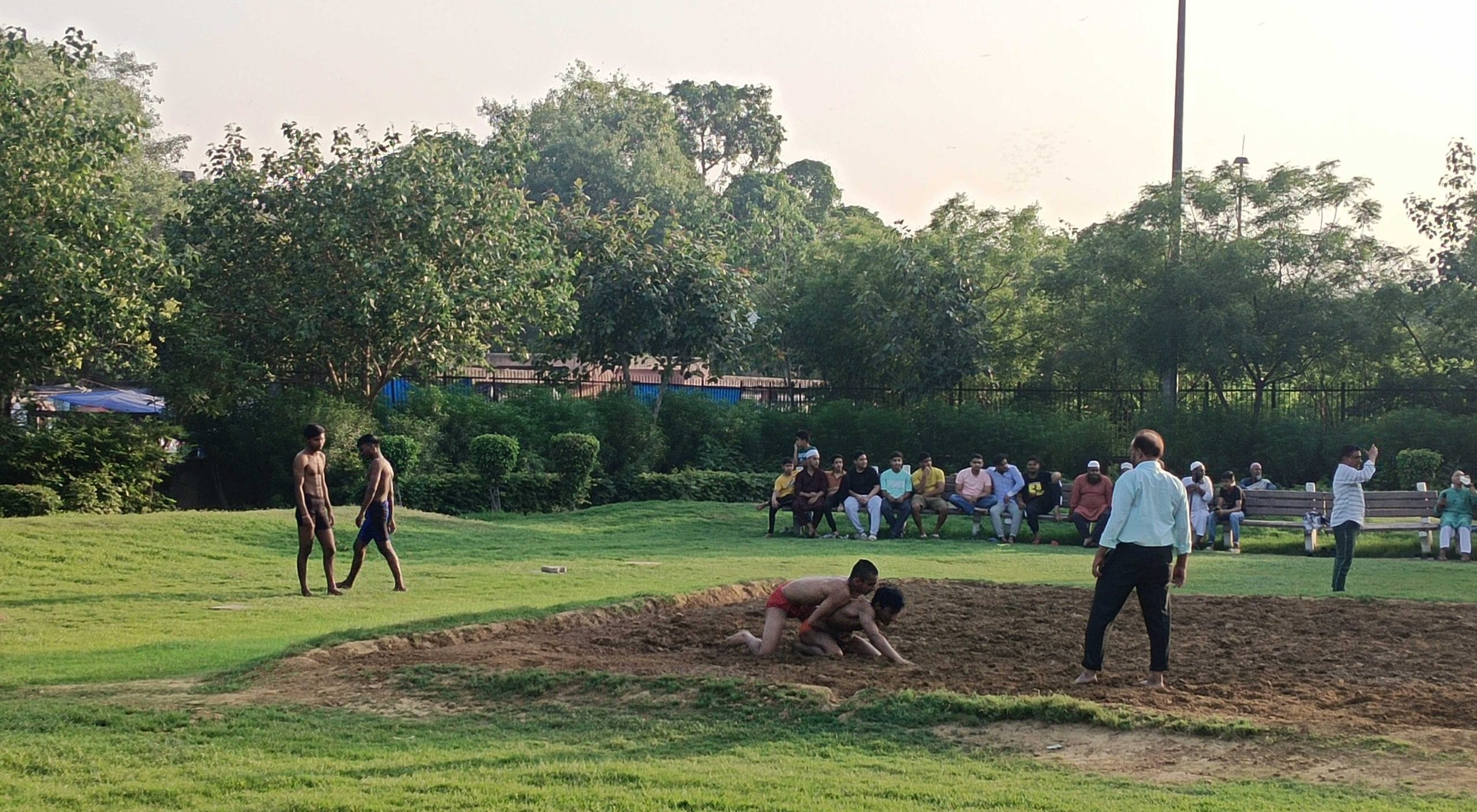
History lessons in the gali
While all eyes and cameras were on Ana, hers occasionally wandered through the crowd searching for a familiar face: her father. Forty-year-old Firoz followed her quietly from a distance, close enough to keep watch, far enough to give her the space to lead with confidence. Wherever Ana guided the tourists, he followed—filming as she brought history to life. Later, he would post clips on Instagram, proudly sharing them with new tourists.
“We have visited many places, but listening to the history from a 10-year-old kid is different and fascinating,” said a Portuguese tourist. “She’s very good with her speaking skills and entertaining as well with her talks.”
Keeping tourists engaged is often the hardest part of being a tour guide. But for Ana, it comes naturally—most questions she gets are not even about the monuments, but about herself.
“They mostly ask about my age and how I know so much,” she said with a smile. “Some want to know about my family, what I like, and my future plans.”
After wrapping up her Jama Masjid tour with the Portuguese group, Ana asked if they’d like to explore more of Old Delhi or go on a food walk. Their itinerary was tight, so they took her number and booked a food tour for another day.
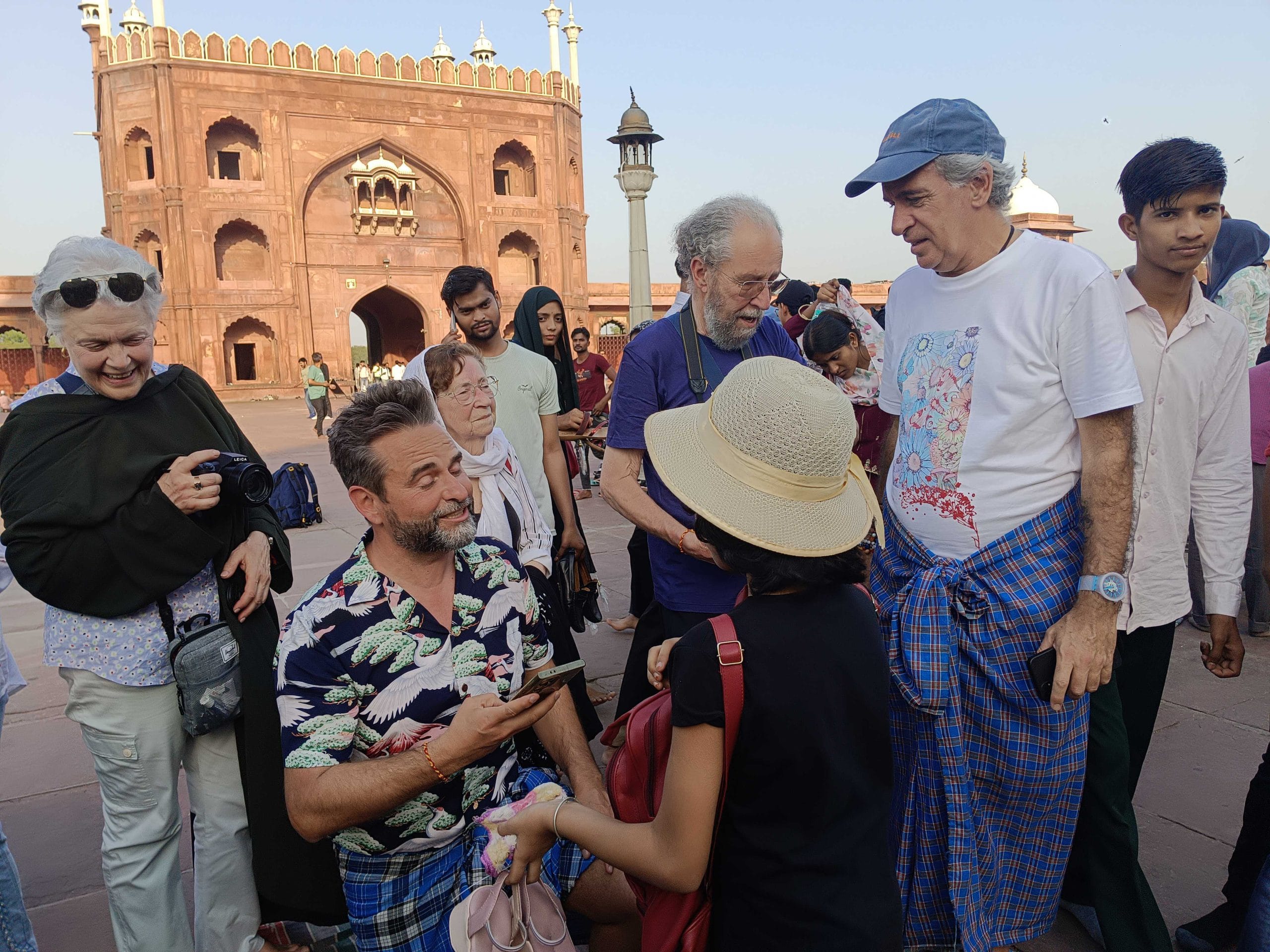
Ana’s day didn’t end there. Soon, she spotted two more tourists—Annelka and Nerissa from Germany.
“Your English is really good, where did you learn it? Oh wow, you know Spanish too? Can I have your Instagram account?” asked Annelka, as Ana began her introduction to Jama Masjid.
“We will definitely explore Old Delhi with Ana,” Annelka later told ThePrint.
“She’s very confident and her strength is the way she interacts with everyone.”
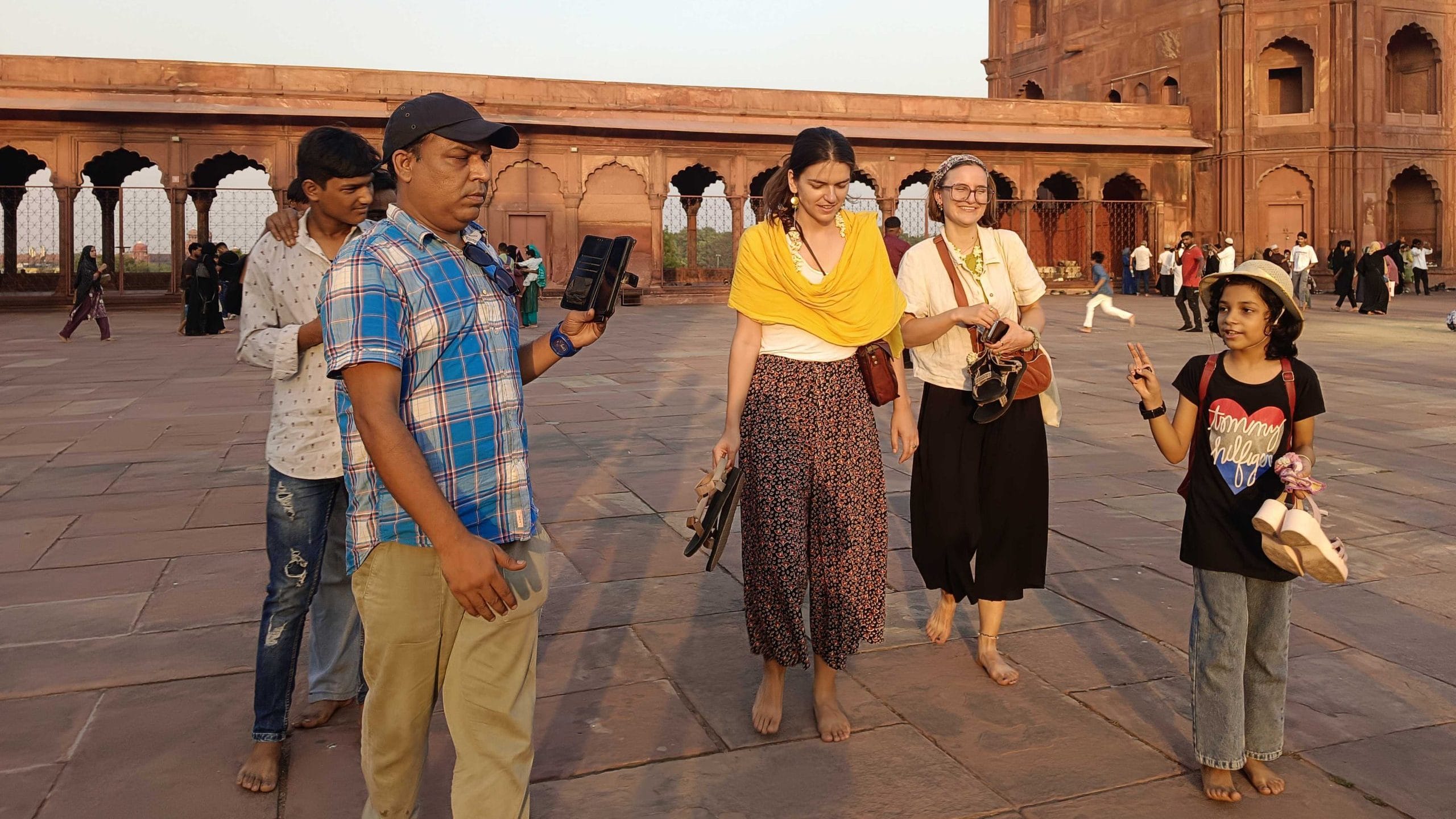
Ana doesn’t charge for these tours, but guests usually gift her something or leave a small tip—enough to keep her motivated.
Anabiya’s father has played the most important role in her journey. He taught her English and introduced her to Delhi’s monuments. Now she is learning Spanish. She already speaks Hindi, English, and Urdu, and plans to learn French next.
A Class 6 student at a new school, Ana has missed many days due to a liver and stomach infection that has been lingering for the past six months. She hasn’t made many friends yet, and her classmates don’t know she works as a tour guide. She spends most of her time at home with her younger brother and pets—two rabbits, a parrot, and a cat.
Her best friend is her grandfather, who helps her with her favourite subject, history. He often buys her history books and storybooks; the latest one is ‘Hazrat Sarhad Shaheed’. Her six-year-old brother is her favourite playmate.
“I don’t just want Anabiya to be a tour guide—I want her to be unique and well-known, someone who has knowledge of world history and languages,” said Firoz.
Also read: The curious India tourism paradox. Domestic pilgrims opt for luxury, foreigners go budget
Not scared anymore
At just 10, Ana became Old Delhi’s youngest tour guide using her English-speaking skills. Others followed not long after. Now, they are all learning about their city in its streets and turning that knowledge into storytelling.
Chandni joined Purani Dilli Walo Ki Baatein four years ago when she was just 13 years old. Initially she just wanted to earn a little and better understand the neighbourhood she had always lived in.
“During the training sessions in the lanes of Matia Mahal and Chandni Chowk, I discovered things I hadn’t known all these years,” said Chandni, who led her first food walk with a group from Kerala.
The community initiative trains underprivileged girls to lead food and heritage walks, weaving stories around monuments, culinary history, and bustling bazaars.
“We didn’t teach them in classrooms,” said Farheen Naaz, programme head at Purani Dilli Walo Ki Baatein. “These girls were born and raised here. They already know most of the things. We just guide them in how to present the history and knowledge they already have.”
As part of the training, the girls learn about eateries, local delicacies, and the significance of sites along the route. They were paid Rs 1,000 for each walk.
“I didn’t know this could be a real profession. In the beginning, I was nervous and always worried about what would happen if I forgot something,” said Chandni. “Now it has become a passion.”
“It doesn’t even feel like it’s been four years. I’ve done 20 to 30 tours. I really enjoy showing people around my place.”
Also read: Fewer tourists are visiting India now. What’s worse, our stand is we don’t really care
The unlikely tour guides
Ana lives with her parents, a younger brother, and her grandparents in a modest home near Chandni Chowk. Her journey from Anabiya to Ana began just a year ago, right on the bustling streets of Old Delhi. One evening, while sitting on a bench with her father, Firoz, she noticed a group of foreign tourists walking by with an animated man pointing out landmarks and speaking with great energy.
“Abbu, what is that man telling them? Why is he pointing toward the gali and the gurdwara?” she asked, eyes wide with curiosity.
Her father smiled gently and explained the idea of tour guiding—how some people are trained to turn ordinary streets into living museums by sharing stories and history. But it was Anabiya’s next question that left him momentarily stunned—and quietly moved.
“I want to be a tour guide too,” she said. “I know everything about this place and I can speak English. Can I do this, Abbu?”
In that moment, her words seemed to cut through the weight of their daily struggles, offering him an unexpected clarity.
Firoz, a home tutor of English who had recently lost his savings trying to help a relative, had been struggling with both finances and a sense of purpose. But Ana’s one question gave him a new hope.
“My daughter not only found a path for her own future but for the entire family,” said Firoz.
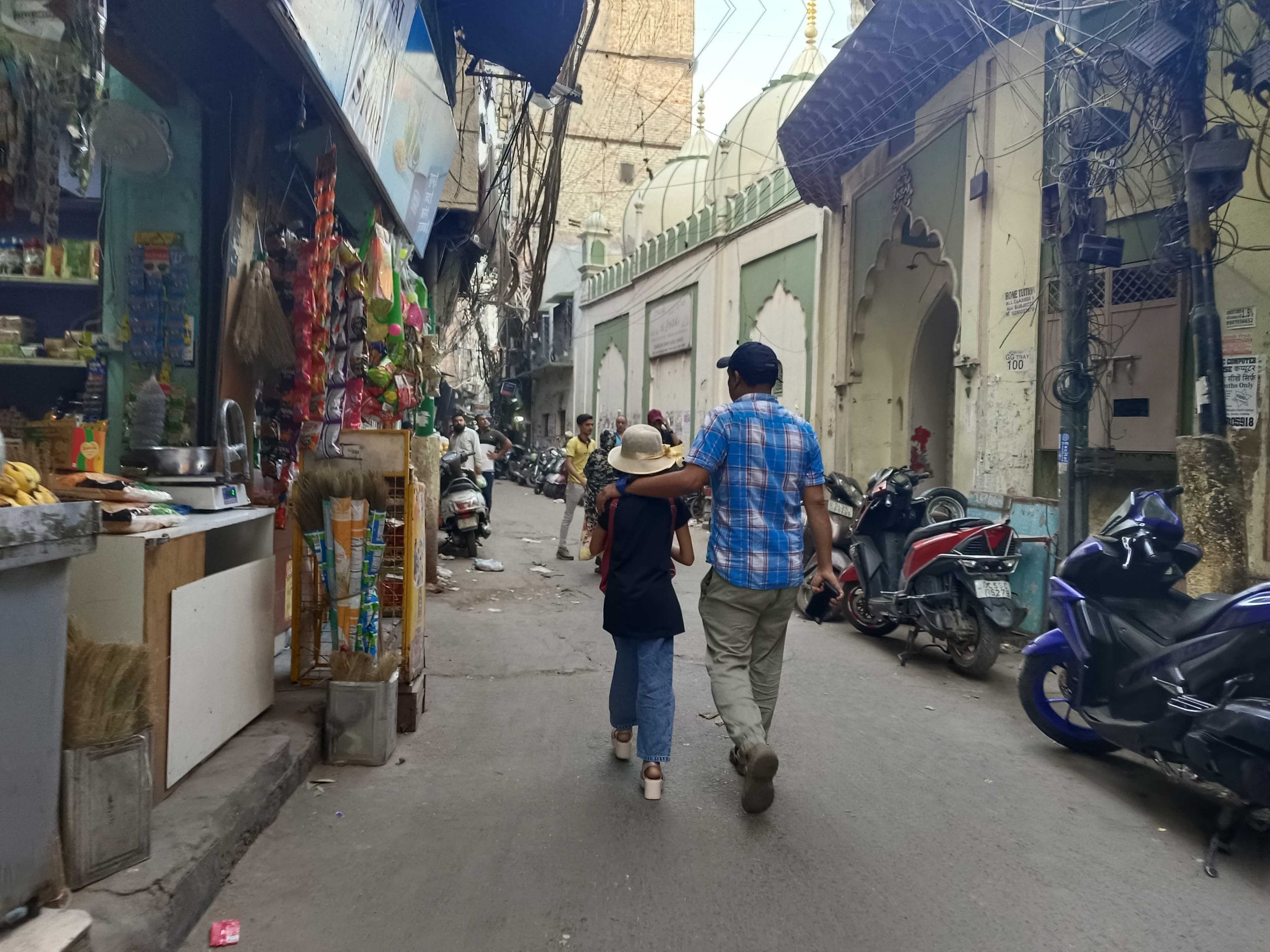
Unlike most tour guides, Ana takes tourists through Old Delhi’s quieter, lesser-known lanes—places that may not be grand, but always offer something special. One of her favourite stops is a narrow alley behind Jama Masjid, ending at a small tea stall in Meena Bazaar where she serves her guests chai and listens to their stories.
Sometimes, Ana’s relationship with tourists goes far beyond the tour. She invites them into her two-room home, offers them tea, introduces her family, and occasionally even shares a meal.
“Tourists I guided six months or even a year ago still message me to ask how I’m doing,” Ana said, showing photos of guests she has hosted.
Also read: Is brand India dimming? Pollution panic, dire warnings for women, big dip in foreign tourists
From survival to storytelling
Heena grew up watching the world pass her by from the roadside where she lived with her mother. She didn’t have a fixed address, but one constant in her life was the steady flow of foreign tourists through Old Delhi.
“Whenever I saw a foreigner getting off a bus, I was struck by how different they looked—their clothes, their language, everything,” she recalled. “I always had this dream that one day I would talk to them. I didn’t really know why or what I’d say—I just wanted to.”
That childhood fascination has since grown into a goal: to become a tour guide. Now 21, Heena is undergoing formal training and is almost ready to lead tours herself.
“It’s always been my dream to meet people from around the world, talk to them, and explore places together,” she said. “Besides the training, I also watch videos and read books so I can give accurate and meaningful tours.”
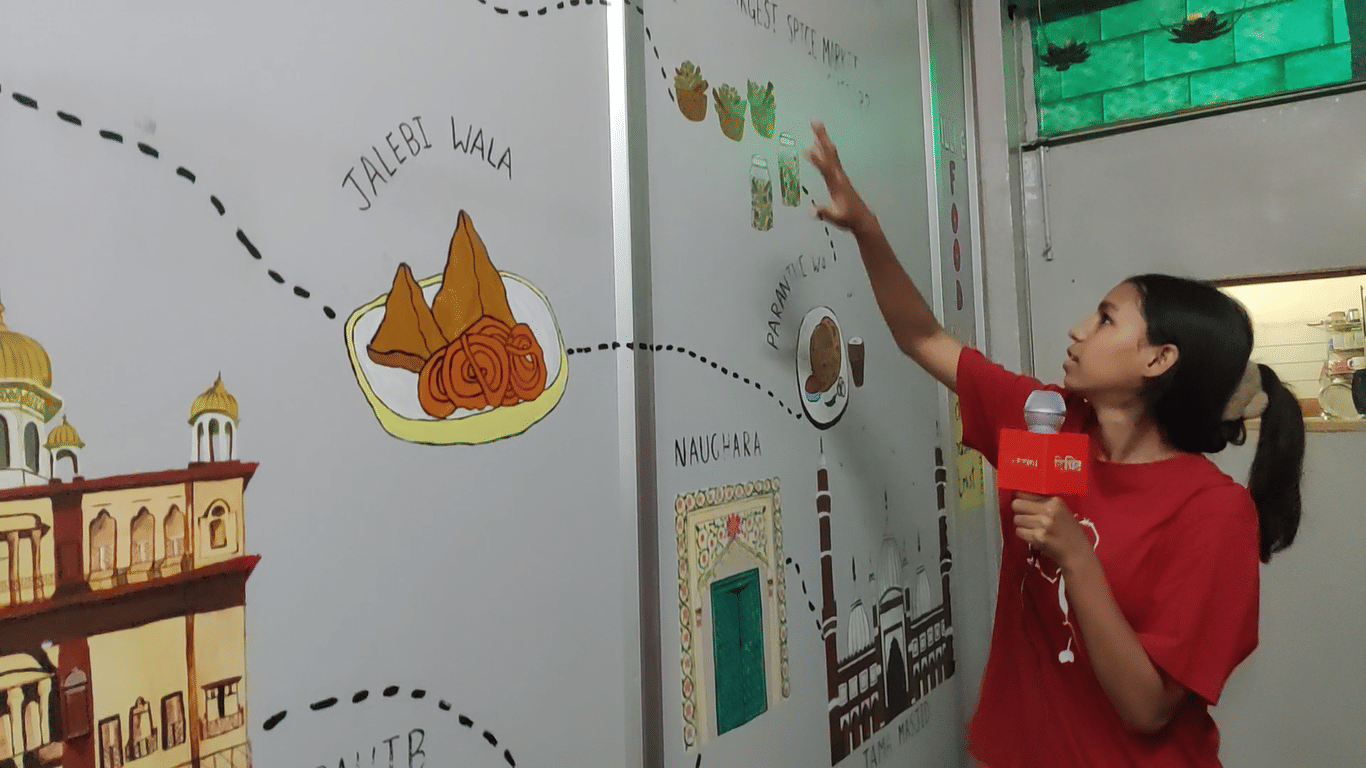
According to Mayurima Kakati, who helps run the initiative, the programme has expanded in the last four-five years. “We used to train five or six children at a time. Now we train groups of 10 to 15. Interest from tourists has grown, and the guides are now coming up with creative ideas.”
While many young guides are focused on building a future in the tourism industry, participants like 16-year-old Kajal see this as a stepping stone.
“I want to become an air hostess,” she said. “I joined the City Walk programme to improve my English and gain confidence.”
A city’s future in small hands
Whether it’s Ana guiding tourists through hidden lanes, Heena preparing for her first walk, or Kajal using the experience to chase a different dream—none of it is as simple as it might seem. These young guides are not just narrating history—they are walking through their own. Becoming a tour guide is more than just a job. It’s a means of survival, a source of confidence, and for many, the start of something bigger.
Behind the bright smiles and practiced greetings lie deeper struggles: juggling school, supporting families, and battling daily to book a tour.
Ana is constantly trying to improve. When she’s not guiding, she is learning Spanish through YouTube or flipping through history books.
“After school, I practice saying things like ‘Hi, how are you? My name is Anabiya’ in Spanish or French. I want to engage more tourists and make them feel welcome,” she said.
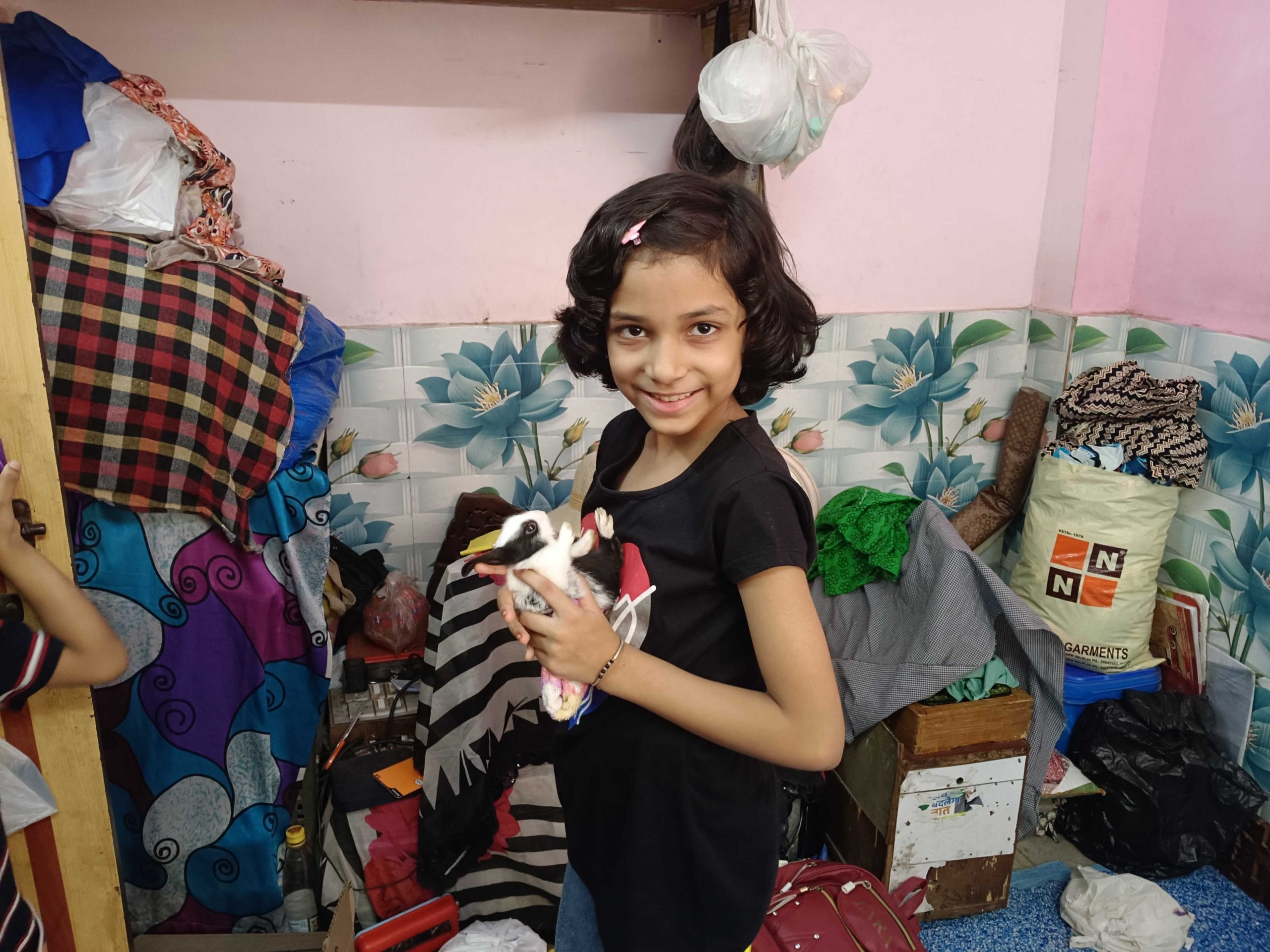
But her biggest challenge isn’t language—it’s winning trust. Many tourists hesitate to follow a child, and some professional guides see her as competition.
“Sometimes I don’t realise a tourist already has a guide,” Ana said. “I start talking, and then the guide gets angry. Some have even shouted at me.”
Seasonal dips bring additional pressure. Summers are especially difficult, with few tourists braving Delhi’s heat.
“During off-season, we focus on training,” said Kakati. “Our children don’t get much work then. So we prepare them for future tours and bigger opportunities.”
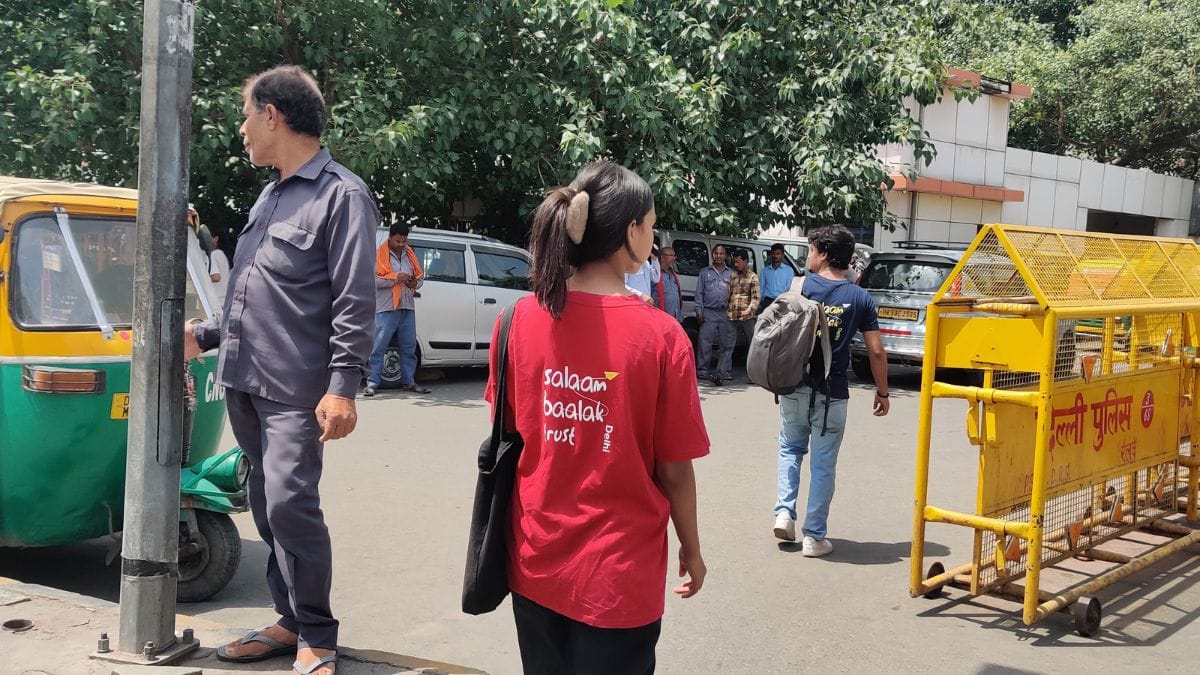
Still, what keeps them going is a quiet resilience—fuelled by hope, hard work, and a belief in what’s possible.
Kajal continues her education with help from her earnings. Ana has become a source of strength for her family.
“Impossible says ‘I am possible.’ So there is always a possibility for everything,” Ana said—a mantra she holds on to when things get tough.
(Edited by Prashant)







Isn’t this illegal ? Children are being employed by this organisation ? They are working as a guide without a valid licence. The organisation putting them to work should be booked under child labour.